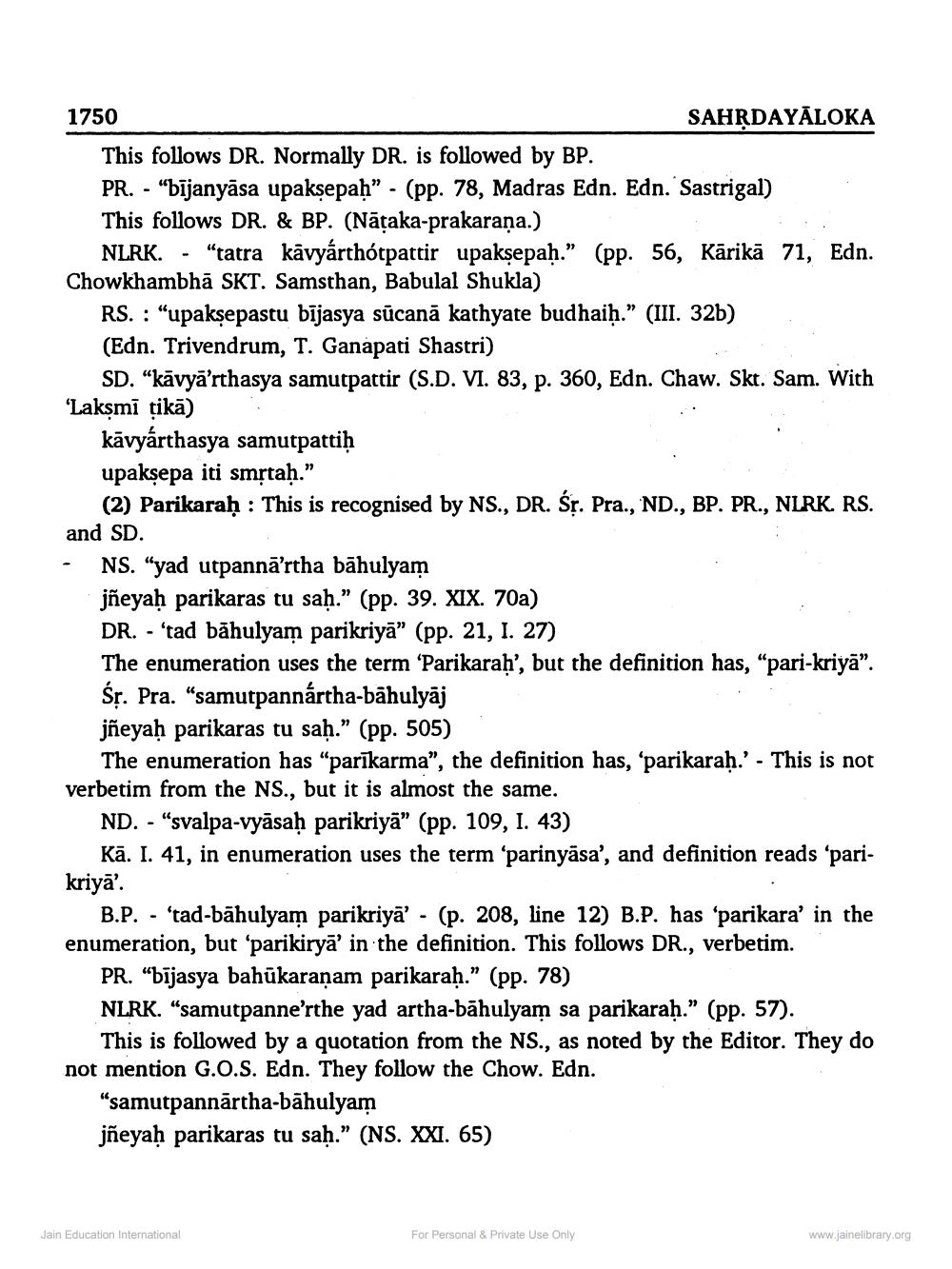________________
1750
SAHĶDAYĀLOKA This follows DR. Normally DR. is followed by BP. PR. - "bījanyāsa upaksepah” - (pp. 78, Madras Edn. Edn. Sastrigal) This follows DR. & BP. (Nāțaka-prakarana.)
NLRK. - "tatra kävyárthótpattir upakṣepa).” (pp. 56, Kārikā 71, Edn. Chowkhambhā SKT. Samsthan, Babulal Shukla)
RS. : “upakṣepastu bījasya sūcanā kathyate budhaiḥ." (III. 32b) (Edn. Trivendrum, T. Ganapati Shastri)
SD. “kāvyā’rthasya samutpattir (S.D. VI. 83, p. 360, Edn. Chaw. Skt. Sam. With 'Lakşmi ţikā)
kāvyárthasya samutpattiḥ upakṣepa iti smộtaḥ."
(2) Parikaraḥ : This is recognised by NS., DR. Śr. Pra., ND., BP. PR., NLRK, RS. and SD.
NS. "yad utpannā’rtha bāhulyam jñeyaḥ parikaras tu sah.” (pp. 39. XIX. 70a) DR. - 'tad bāhulyam parikriyā” (pp. 21, I. 27) The enumeration uses the term 'Parikaraḥ', but the definition has, “pari-kriyā”. Śr. Pra. "samutpannártha-bāhulyāj jñeyaḥ parikaras tu saḥ.” (pp. 505)
The enumeration has “parıkarma”, the definition has, “parikarah.' - This is not verbetim from the NS., but it is almost the same.
ND. - "svalpa-vyāsaḥ parikriyā” (pp. 109, I. 43)
Kā. I. 41, in enumeration uses the term 'parinyāsa', and definition reads ‘parikriya'.
B.P. - 'tad-bāhulyam parikriya' - (p. 208, line 12) B.P. has 'parikara' in the enumeration, but 'parikirya' in the definition. This follows DR., verbetim.
PR. "bījasya bahūkaranam parikarah.” (pp. 78) NLRK. "samutpanne’rthe yad artha-bāhulyam sa parikaraḥ.” (pp. 57).
This is followed by a quotation from the NS., as noted by the Editor. They do not mention G.O.S. Edn. They follow the Chow. Edn.
"samutpannārtha-bāhulyam jñeyaḥ parikaras tu saḥ." (NS. XXI. 65)
Jain Education International
For Personal & Private Use Only
www.jainelibrary.org




